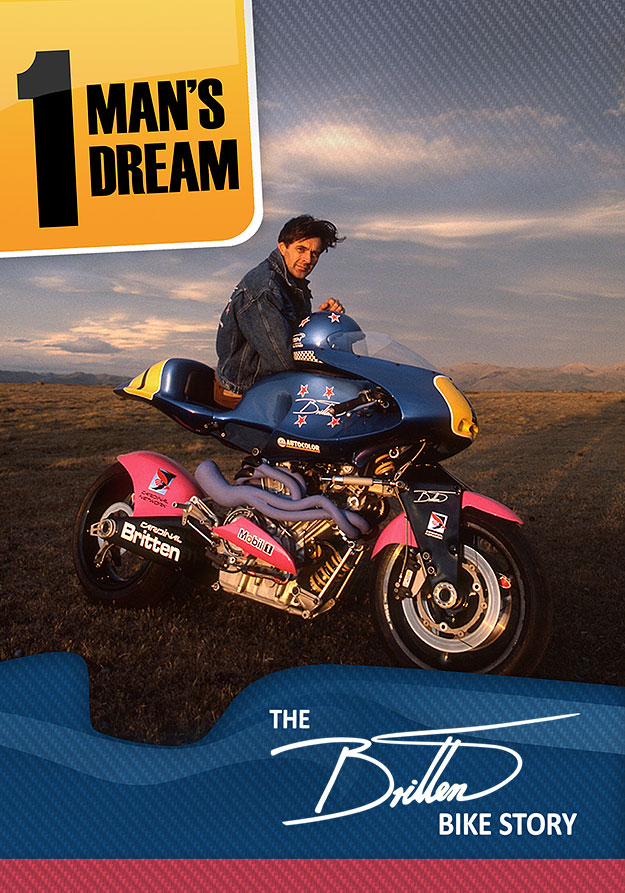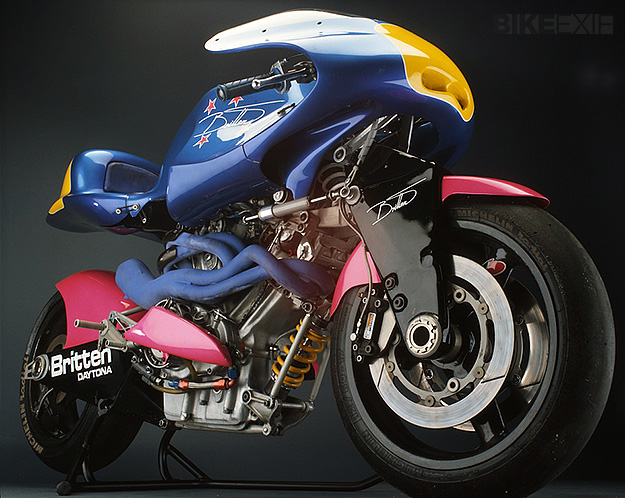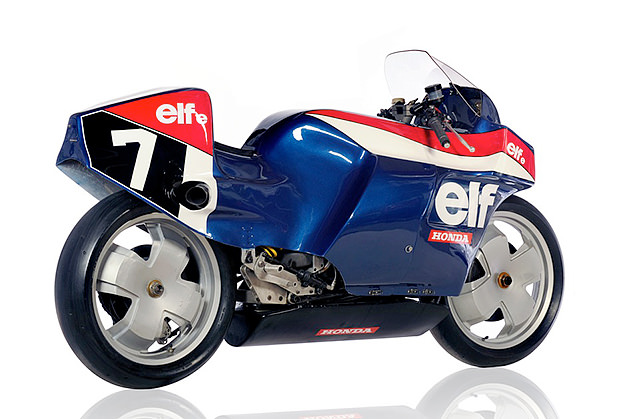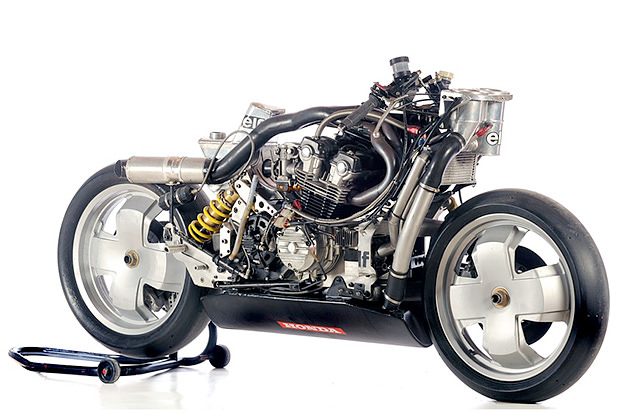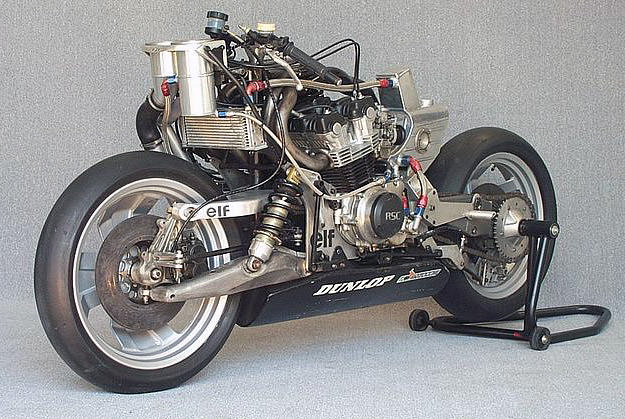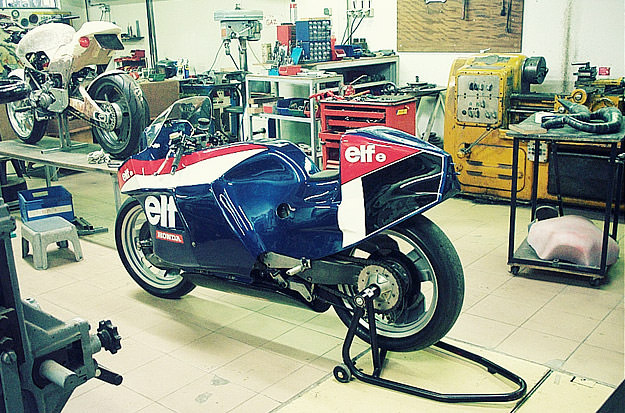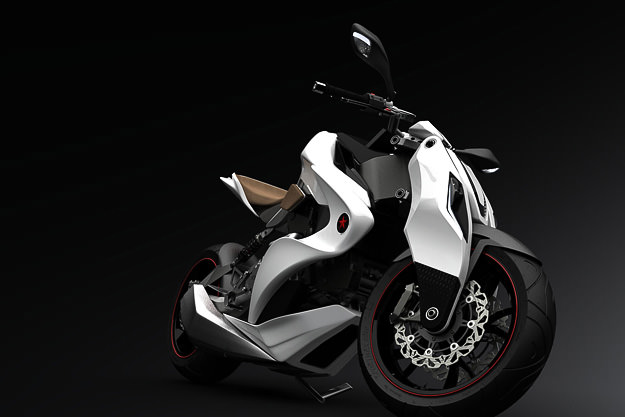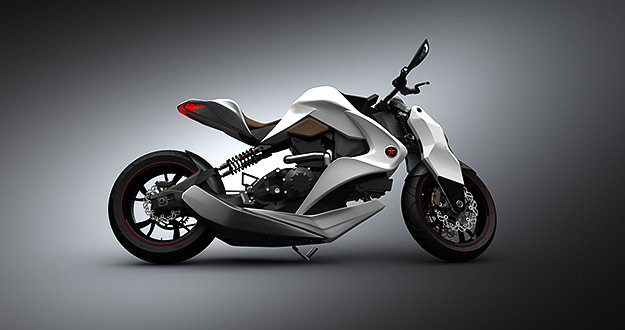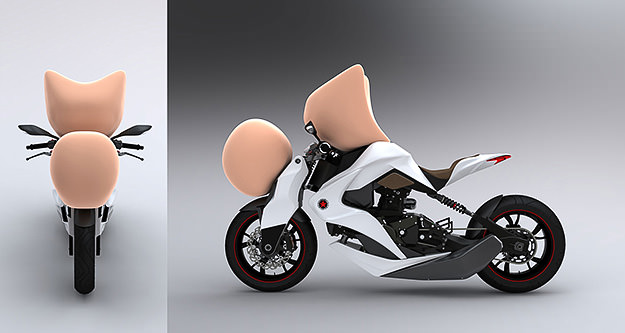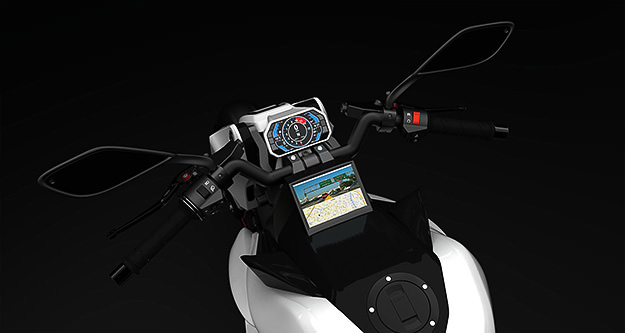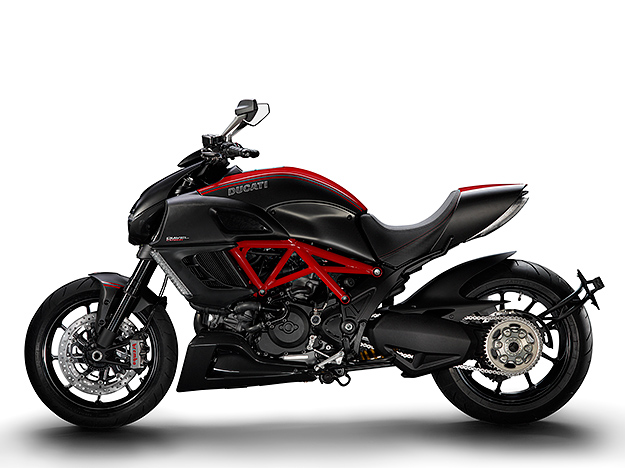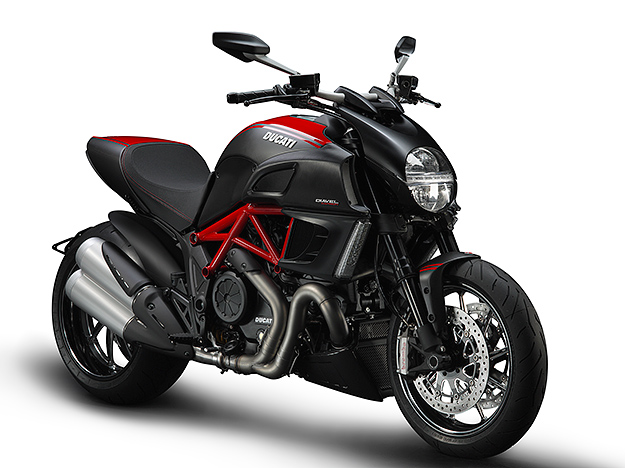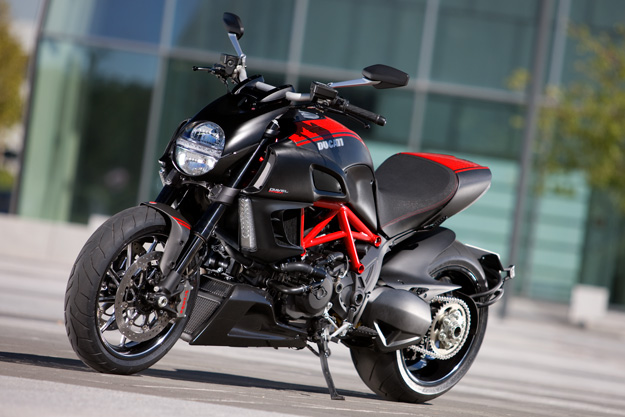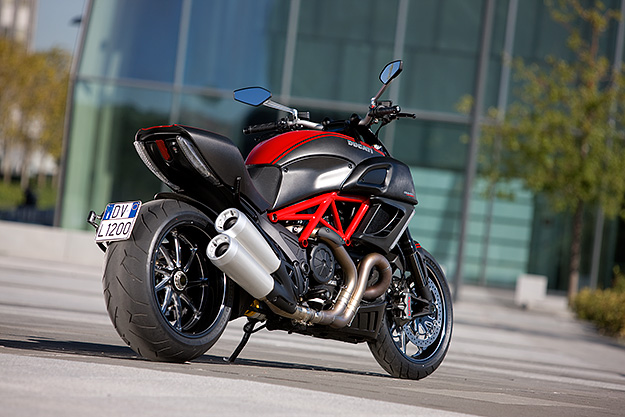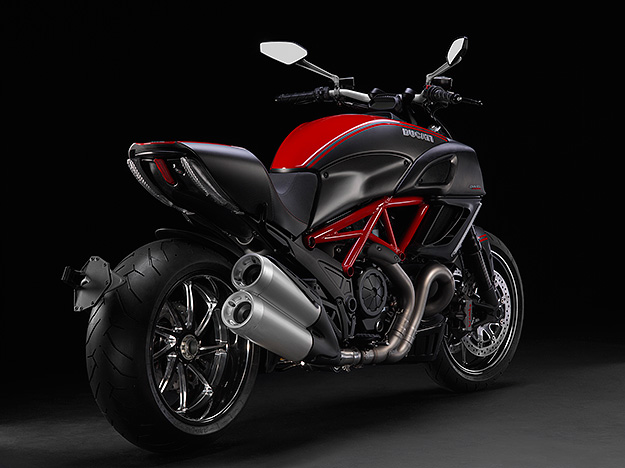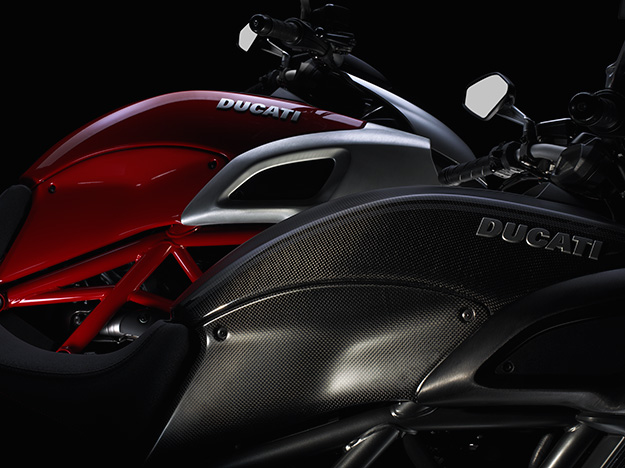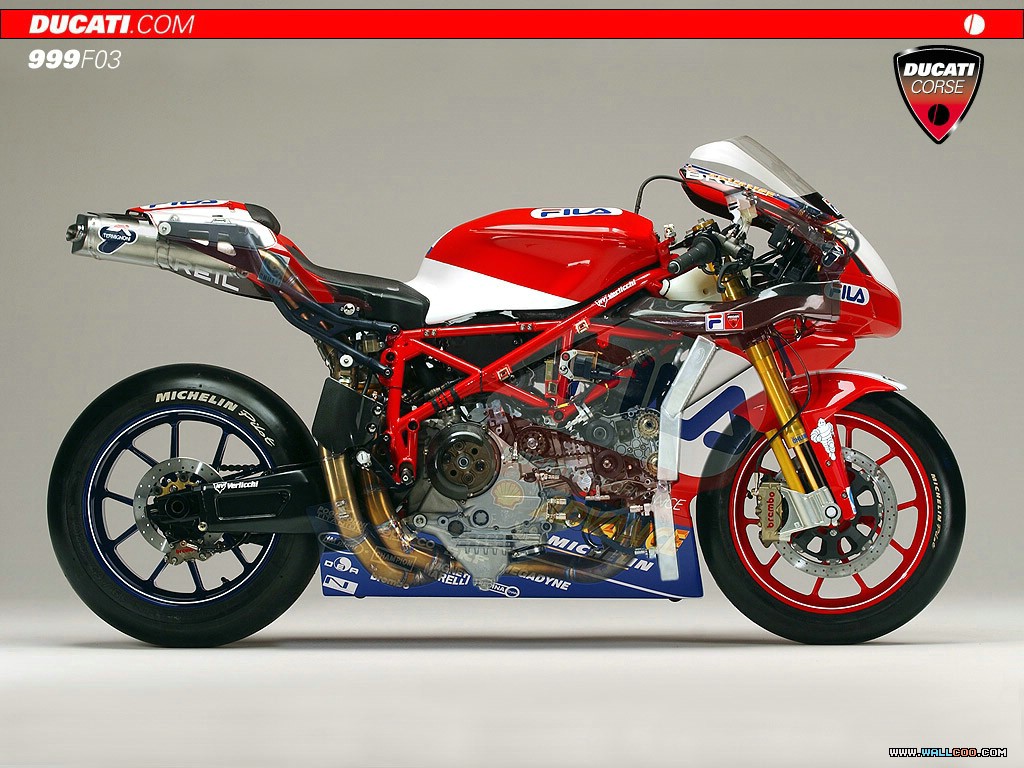



Ducati 999 Features:
Year: 2005
Category: Sport
Rating: 73.1 out of 100. Show full rating and compare with other bikes
Engine and transmission
Displacement: 998.00 ccm (60.90 cubic inches)
Engine type: V2, four-stroke
Power: 140.00 HP (102.2 kW)) @ 9500 RPM
Torque: 111.00 Nm (11.3 kgf-m or 81.9 ft.lbs) @ 8000 RPM
Compression: 11.4:1
Bore x stroke: 100.0 x 63.5 mm (3.9 x 2.5 inches)
Valves per cylinder: 4
Fuel system: Injection. Marelli electronic fuel injection, 54 mm throttle body
Fuel control: Desmodromic valve control
Cooling system: Liquid
Gearbox: 6-speed
Transmission type,
final drive: Chain
Clutch: Dry multiplate with hydraulic control
Chassis, suspension, brakes and wheels
Frame type: Tubular steel trellis
Rake (fork angle): 23.5°
Front suspension: Showa 43 mm upside-down fully adjustable fork with TiN surface treatment
Front suspension travel: 130 mm (5.1 inches)
Rear suspension: Progressive linkage with fully adjustable Showa monoshock
Rear suspension travel: 148 mm (5.8 inches)
Front tyre dimensions: 120/70-ZR17
Rear tyre dimensions: 190/50-ZR17
Front brakes: Double disc
Front brakes diameter: 320 mm (12.6 inches)
Rear brakes: Single disc
Rear brakes diameter: 240 mm (9.4 inches)
Physical measures and capacities
Dry weight: 186.0 kg (410.1 pounds)
Power/weight ratio: 0.7527 HP/kg
Seat height: 780 mm (30.7 inches) If adjustable, lowest setting.
Wheelbase: 1,420 mm (55.9 inches)
Fuel capacity: 15.50 litres (4.10 gallons)
Other specifications
Starter: Electric
